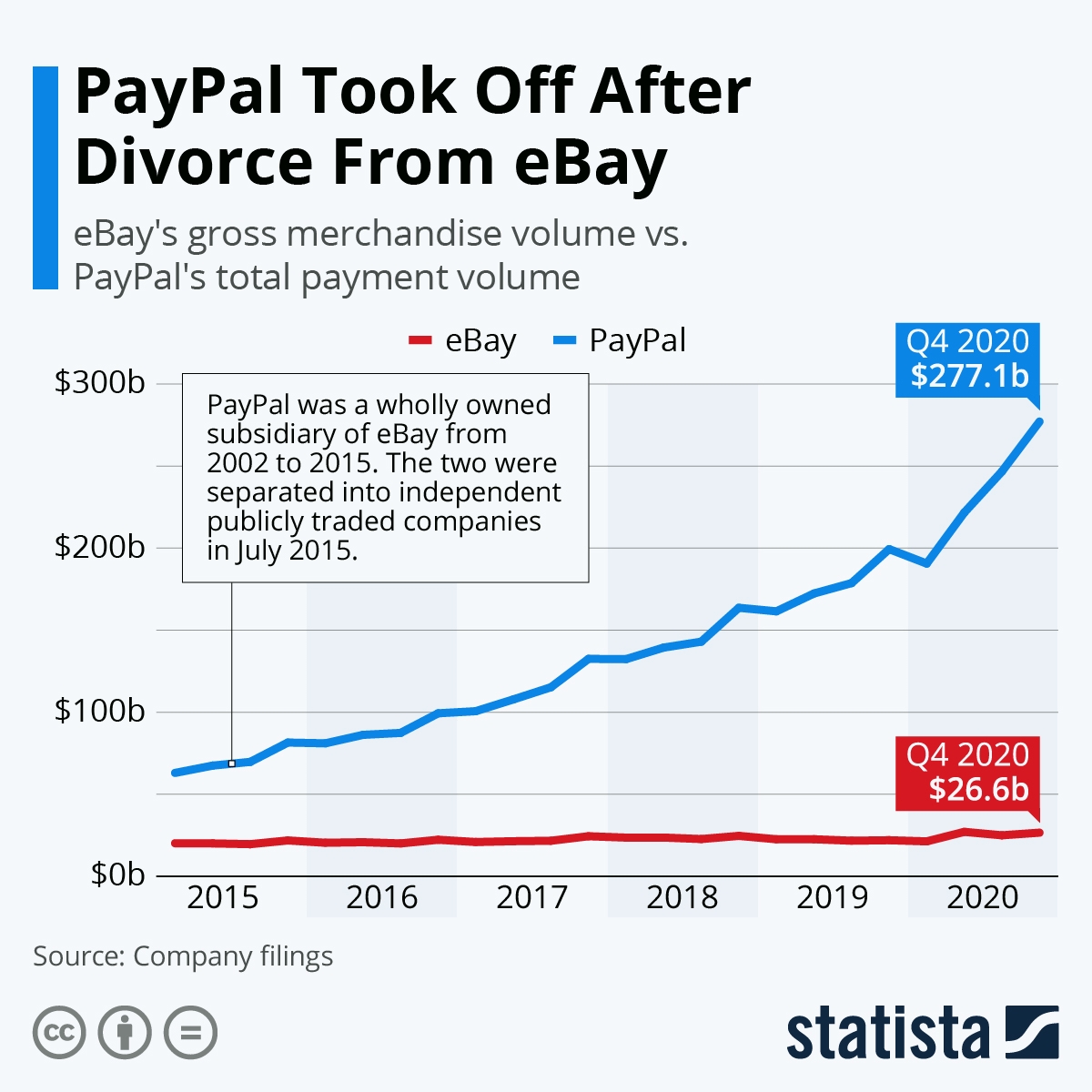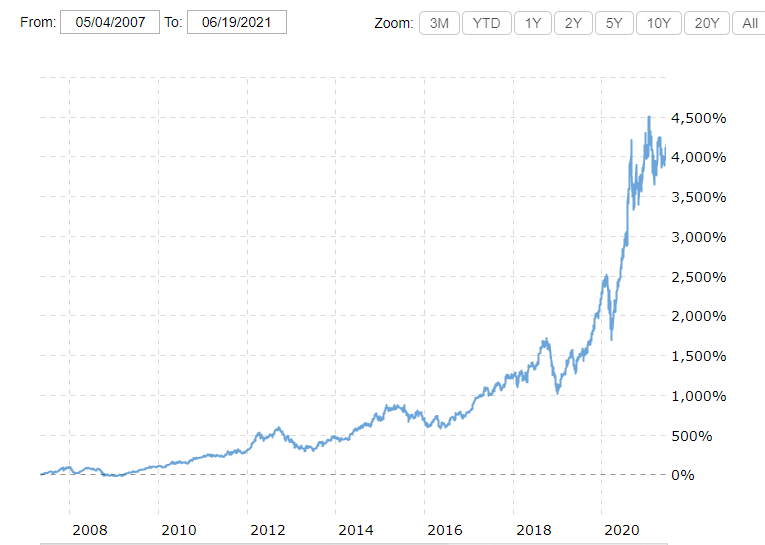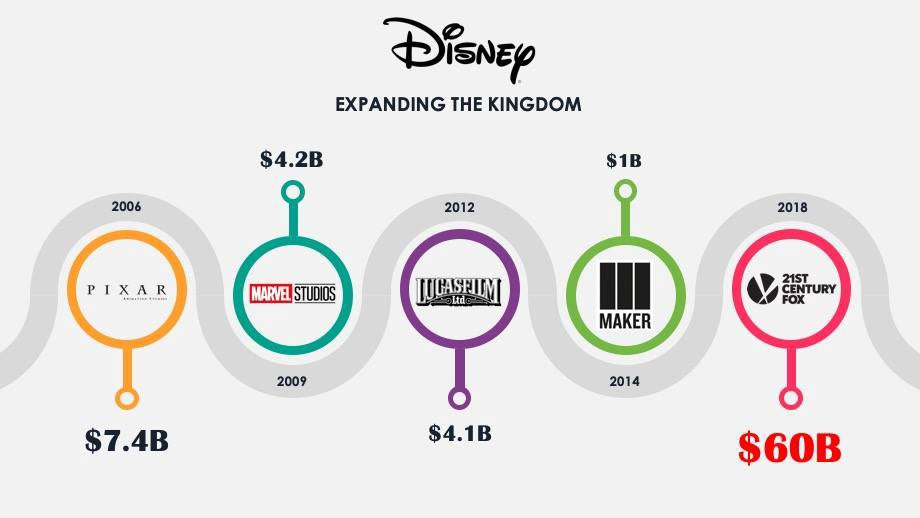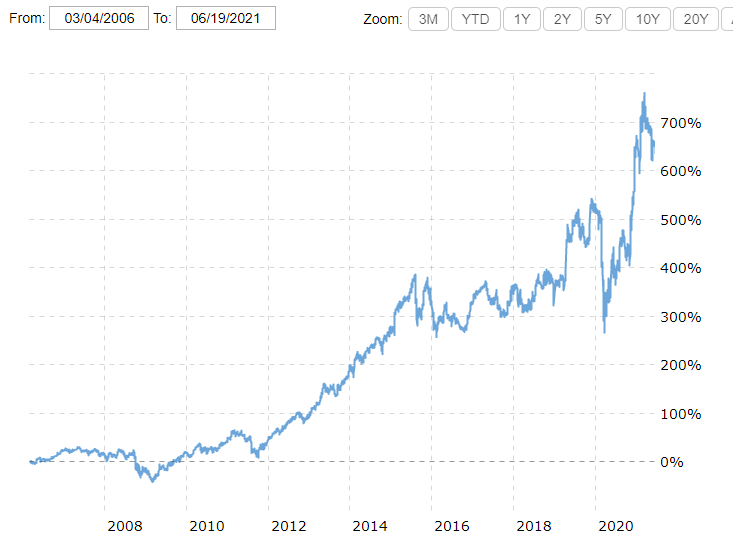Sometimes, I don’t sleep well. In fact, a lot of nights I don’t sleep well (not because of my stock picks though!). This has been a recurring problem I have dealt with my entire life, so I am used to it.
While trying to fall asleep at 2 AM, I usually find myself scrolling through the internet/YouTube to find something to hopefully lull me to sleep.
My go-to channel for these late-night binges is almost always Professor Aswath Damodaran’s YouTube Channel.
Now, this is no slight to Professor Damodaran. I absolutely love his lectures, but they are still college lectures. Anyone who’s been to college knows that they can sometimes be the cure for insomnia.
If you don’t know about Professor Damodaran, you really should. He is widely known as the “Dean of Valuation”, and teaches corporate finance and equity valuation for the Stern School of Business in New York.
I don’t know how he is able to legally do this, but he usually posts all of his corporate finance lectures on YouTube for the masses. These lectures are great not only for my sleeping problem but also for great learning.
One sleepless night, I was listening to one of his most recent lectures on value enhancement. It was such a good lecture that (unfortunately for my body) it kept me awake the entire night.
My Take on Value Creation
As a value investor, I am looking for companies that not only offer me a great deal from a value perspective but ones that can also create value for me over time. This is difficult for a company to do, so finding a business that can provide you with great value and compounding value is truly a diamond in the rough.
In this post on value creation, I will go over Professor Damodaran’s four key points on how companies create value for shareholders, with some of my own takeaways and examples.
I hope I don’t put you to sleep.
1. Changing Cash Flows From Existing Assets
As an equity shareholder in a business, you are claiming a stake on all cash flows after a business has paid its dues. Simply put, those cash flows are usually returned to investors in the form of:
- Dividends
- Share Buybacks
- Reinvestment
- All of the above
In order for you, the shareholder, to actually receive this cash flow, the business has to be cash flow positive. How do they go about making more cash?
Increasing After-Tax Earnings From Assets in Place
Spoiler alert: large companies that are publicly traded usually pay a lot of taxes to the government. Shocking statement, I know.
That being said, businesses are usually very savvy on taking advantage of every tax break they legally can in order to pay fewer taxes. In fact, one of Professor Damodaran’s most recent blog posts discusses this very topic.
With every new political administration comes new tax rates. The last thing I want to do is get political here, so think about it like this: the less the company pays in taxes, the more cash they have to return to you as a shareholder. It behooves the business to take advantage of all the tax loopholes as possible.
Think of it the same way you file your income taxes. You want to apply the highest deductions so you can get the largest refund possible.
This may sound basic, but proper corporate tax accounting is a fundamental requirement. Or else management gets sent to jail.
Reducing Reinvestment Needs
As I mentioned above, a key way that management returns cash to shareholders is by reinvesting the leftover cash for you. That leftover cash is then supposed to be used to make the business compound even more cash.
How is this done?
Cutting Costs and Making Operations More Efficient
Cutting costs is no fun, especially for businesses. This sometimes leads to laying off employees, which is obviously not good economically.
However, sometimes cost cutting is a necessary measure in order to either save money, or the business entirely. After all, the business is no good to you as a shareholder if they cannot generate cash.
Making growth investments into a more efficient business model is much more preferred. Putting funds away to remodel a new warehouse, or upgrade to a new software will certainly create valuable time and resources for the business.
It’s a much better option than laying off employees.
Divesting or Spinning Off Assets
If you suffer major blood loss in one of your limbs, you have to apply a tourniquet in order to stop from bleeding out. Sometimes this does not work, and the appendage is just too far gone. The next step is amputation.
I apologize for the gruesome imagery, but this is a perfect metaphor. In business, sometimes the best thing to do is part ways with a poor investment or decision.
Nobody likes to admit when they are wrong, especially managers of a publicly traded company. They have to approach shareholders, admit the mistake, divest the business or asset, and move on. This often can cause them to lose their jobs.
But that’s the worst case. The best case is a spinoff.
eBay and PayPal Spinoff

One of the most successful divestitures in corporate history recently occurred with eBay’s spinoff of PayPal. eBay created PayPal as its own proprietary payment software for the auction website. PayPal ended up becoming so effective that in 2015, eBay divorced itself from PayPal.
Now, this may sound bad for eBay, and it kind of was. Six years later, eBay is struggling to keep up with the rest of the e-commerce industry. They are still operating a great business, just not as dominant as they once were (no thanks to Jeff Bezos and Amazon).
However, this was a brilliant decision for eBay shareholders. At the time of the split, every eBay shareholder received one new share of PayPal for every share of eBay stock that they owned. Since then, PayPal’s stock price has been on a tear. PayPal is now worth far more than its parent company.

Source: Statista
2. Increase Value From Expected Growth
This is definitely easier said than done. Being able to reinvest cash and grow at a higher rate than the year before is something that only the best executives can pull off.
So then, how does a company successfully increase yearly returns? The better question is, how does management increase the rate of their return on invested capital?
Improving ROIC on the Reinvestments
There are many ways executives can decide to reinvest cash to compound the business. Here are some examples:
- Reinvesting in More Projects
- Create M&As that Make Sense
- Grow Market Share and Expand to New Markets
Let’s explore how these add value.
Develop New Products
Without a doubt, usually creating a better consumer product will lend itself to higher returns. If you can make a newer or better product than your competitors, then you have won the game.
Here’s an example of a product that has probably created the most shareholder value of all time: the iPhone.

via Wikimedia Commons
When Steve Jobs first announced the iPhone back in 2007, it was truly a revolutionary device. A phone that had a digital screen with “apps”? It’s hard to believe that this was only 14 years ago…
The iPhone, and all the follow-on generational models, has been a colossal beast of a product. It’s generated hundreds of billions of dollars in revenue for the company and rewarded shareholders immensely. If you had bought Apple stock back when they first announced the iPhone, you’d be sitting on an over 4,000% gain.

Source: Macrotrends
Generate M&As that Make Sense
Mergers and acquisitions are tough to do right. It takes stellar management to complete a successful merger. It’s also often perilous, as most companies overpay to buy another one.
One last recent success story would have to be Disney.
When Bob Iger became CEO of Disney, he took the company on an acquisition spree. Under Iger’s leadership, Disney gobbled up some incredible intellectual property, with some huge household names like Lucasfilm, Marvel, and Pixar.

Source: Medium
Nearly all these additions to the house of mouse have been nothing short of incredible (with 21st Century still TBD). It’s no secret that Disney virtually owned the box office over the last decade, and now has leveraged their IP to be streamed right into your favorite device via Disney+.
These acquisitions made Disney one of the largest media enterprises on the planet, and this has absolutely rewarded shareholders. If you had bought Disney’s stock when Bob Iger took over the company, you would have seen your shares appreciate over 600%.

Source: Macrotrends
3. Lengthening the Growth Period by Creating Or Augmenting Competitive Advantages
Build On Existing Competitive Advantages
Brand Name
Many companies’ largest strength is simply their brand name. Coca-Cola is the first business that comes to mind here. Actually, by the brand being the first example that popped into my head, it already proves how strong the brand name really is. Some brands are so popular ingrained in our minds that they actually dominate the identity of the product.
For example:
- Kleenex = tissues
- Band aid = bandages
- Google = web search
- Chapstick = lip balm
- Post-it = sticky note
- Coke = sweet soda beverage (At least, for everyone in the South)
And the list goes on evermore. But like empires, powerful brands aren’t built in a day. They take decades of marketing and advertising to get to this point. Not to mention the obvious factor: the product needs to be great.
Brand Protection
After an amazing brand is created, it must be defended. Sometimes the defense of a brand can be harder than creating one. Remaining top dog in people’s minds is not a simple thing to do, as I am sure many marketers will tell you.
Good management in a company will know that they should do all they can to protect the brand that pays their salary. Let’s continue on using Coca-Cola as an example.

In the past couple of decades, the Coca-Cola company has been the source of criticism in some outlets for producing a beverage that is quite unhealthy. Their drinks have been linked to terrible diseases like obesity and diabetes; but this is not exactly groundbreaking news.
However, this controversy has really unaffected the company on the whole. Coca-Cola is a well-diversified company at this point in the corporate life-cycle and owns many brands of beverages, with some of them being more “healthy” options.
Plus, at this point the brand is so powerful, it is almost too big to fail. Coca-Cola has done an excellent job of marketing their brand in association with good times and happiness. So good, in fact, that nearly 80% of the company’s profits are likely from the brand name alone!
After all, who doesn’t want a sweet drink once in a while?
Find New Competitive Advantages
Switching Costs
Imagine I just told you that your bank magically foreclosed, and you now had to switch to a new institution. How big of a pain would that be?
You would have to open a new account at a new bank, transfer all your money to that new account, get with HR at work to ensure your direct deposit goes to the new account, get a new debit card… I think you get the picture.
In this regard, certain banks, insurance companies, and other financial institutions benefit from the switching costs advantage. Nobody enjoys the chore of opening new accounts and talking to more people!
Companies that are able to understand this phenomenon will benefit from trying to implement it into their business model. In order to make this work, you want the barrier to entry to be low, but the hurdle to exit to be painful. This is difficult to do, but can be done by having one of the two business models below:
- Decent business: offer an annoyingly necessary product
- Best Business: offer a sticky product not found elsewhere
The decent businesses are ones that offer products that are necessary to have, but are a pain to leave because of fees. Think of your recurring payments every month (either in or out): insurances, banks, cable/internet, etc. These companies are offering necessities, usually with contractual obligations. They make it a colossal pain to switch to another service for those just trying to save $20 a month.
Best to stick with them rather than pay the cancellation fee.

The best businesses are ones that offer a sticky product not found elsewhere. These tend to be tech companies that offer subscription business models. Think products like Adobe, Autodesk, or even Microsoft Office. These are all fantastic products that have widespread adoption that are used in many companies/governments, and are not easily replicated.
All of these companies had previously offered their product as a one-time purchase. However, they quickly realized that being able to retain their customers for a small monthly fee would provide more stable sources of revenue, thus creating more value for shareholders.
Having a sticky product with recurring revenue is the far better option for both consumers and stockholders.
Cost Advantages
Companies that can find a way to lower their costs below that of their competitors will always be more beneficial to customers. The key here is being able to cut costs, but still being able to come up with free cash flow at the same time.
This usually means that the business has pricing power over its competitors. This is what makes or breaks commodity companies.
Here’s an example:
If you operate an oil rig that only costs $30 to drill for a barrel of oil, but all your competitors are paying $50 to drill, then you have a $20 cost advantage over them. This advantage is even more significant if the price per barrel were to fall to $40.

With the cost advantage, your company would still be making a profit, while your competitors are left scrambling to cut costs or acquire debt.
The trick here is to gain the cost advantage and keep it for as long as possible. This can lead to cut-throat price wars, but in the end, if your company can be the lowest-cost producer, you will be the only one left standing.
4. Lowering The Cost of Capital
Reducing The Operating Risk in Investments/Assets
Outsourcing
If a certain department or division of a company can be effectively outsourced (with no moral hazards), then why not do it? Effective outsourcing can allow businesses to focus what they do best and outsource the rest to someone else that can do it better.
Reduce Leverage
Reducing or eliminating debt is a sure-fire way to increase shareholder value. When a company goes bankrupt, the lien holders are the first ones to get their money back, not stockholders.
By subtracting the debt, this means that you’re ownership is that much greater. Personally, I prefer to look at companies that have zero net debt, as that just means the company is a far less risky bet.
Flexible Wages and Cost Structure
COVID forced many of us to work from home, or at least use a hybrid model. This is likely to be the norm for most companies going forward.
Both companies and employees benefit from flexible working. Companies are going to require less office space, which will cut down on real estate costs. The employee benefits from not having to commute to work every morning, and getting to work in their pajamas all day!

This new work structure will most likely have companies and employees feed more into the gig economy. This will also allow companies to be able to offer employees a more flexible salary or payment options.
I truly believe that the new remote/hybrid working environment is going to be a net benefit to almost everyone. But the most important benefactor is one you probably haven’t even thought about: the environment.
Think about it. Fewer cars commuting to work every day will eliminate a lot of traffic and pollution. Less office spaces in urban areas means we can build more parks and green spaces in order to revitalize our environment.
Enhancing Current Products
Make the Product or Service Less Discretionary
I can think of one product over the last 20 years that has gone from barely used, to widely adopted: the cell phone.
Not only did the cell phone become the norm, we rapidly created new innovations on the cell phone by turning them into smartphones. 20 years ago, you really didn’t need a cell phone. You could get around and do things without it just fine.
Fast forward to today, and I can barely function without my cell phone. I use it for directions, music, reading, texting, etc. This widespread adoption of technology benefited many companies in lots of industries; telecommunication giants like Verizon and AT&T, phone manufacturers like Apple, semiconductor companies for the processors, the list goes on.
Changing Product Characteristics
Making a product more user friendly will only delight customers. Simply upgrading a product to a new model or even just making it look more appealing can increase sales.
More Effective Advertising
As mentioned above, marketing and advertising are enormous investments for a lot of businesses. Establishing a new marketing campaign can breathe new life into a brand or product.
Remember a few years back when IHOP announced they were changing their name to IHOB?

This stunt sent the internet ablaze. It obviously didn’t actually happen, but this campaign actually saw IHOP see some renewed attention and increased revenues for a while.
Changing The Financing Composition
Match Debt to Assets
Normally, companies operate with a “normal” debt to assets ratio. Sometimes they can be over or under their target. By making a simple tweak to this, management can create more value for shareholders.
For example, there’s a company that currently has no debt, but normally operates at a 0.5 D/A ratio. Say that this company wants to acquire another firm, but it doesn’t have enough cash on hand.
Since the company currently has no debt and normally operates at a 0.5 D/A level, this would allow them to lever up a bit in order to make the acquisition.
Conclusion
Finding quality businesses to invest in is important. What’s even more important is that you are able to understand how that business can enhance your investment by creating value.
If a company is able to repeatedly create value year after year, that is the sign of a high-quality compounder that you should investigate further. A lot of these businesses are well-known and fully priced, so the hardest part (for me anyway) is maintaining discipline in valuation.
























